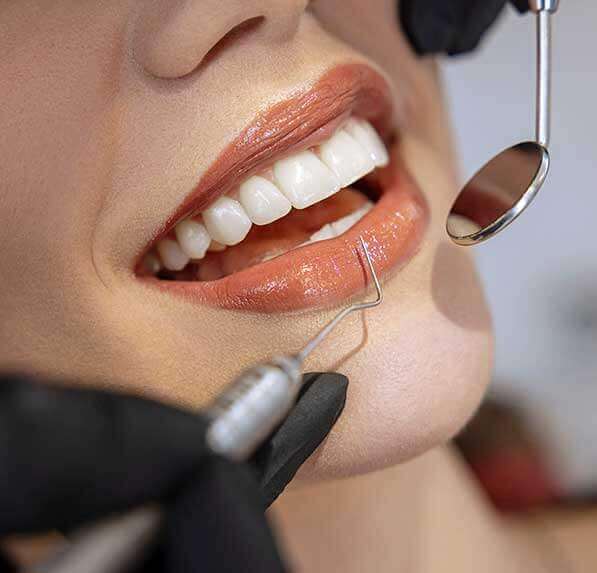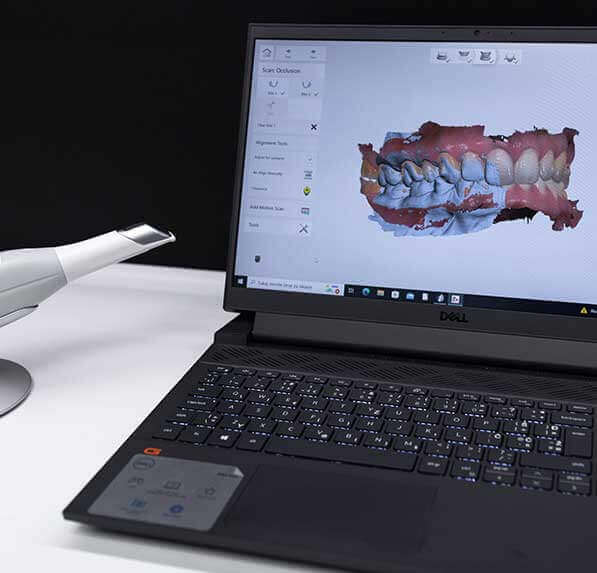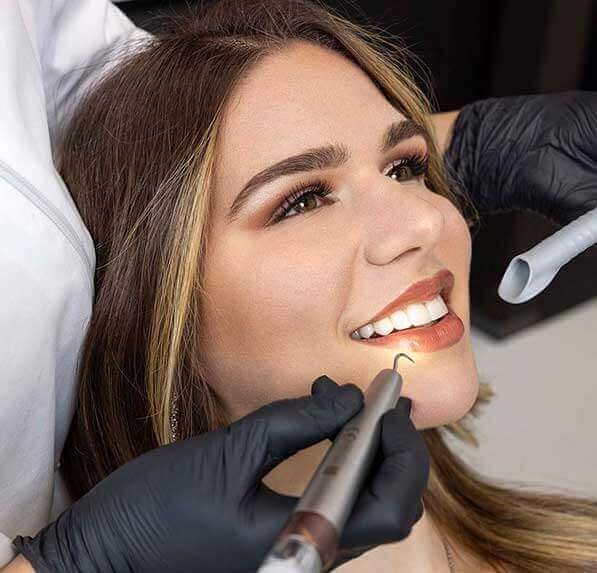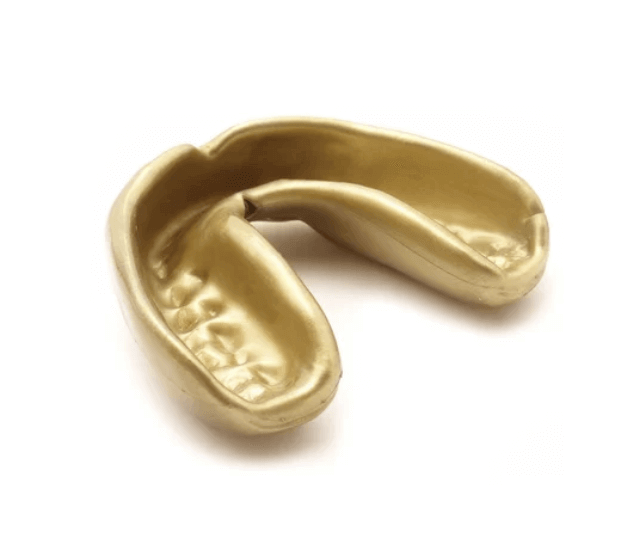A clinical examination of the teeth is conducted using the ZEISS DENTAL MICROSCOPE, which allows for a large field of view and better illumination, enabling us to diagnose dental caries and other changes in teeth and periodontal tissues with exceptional precision.


Intraoral X-rays are used to capture precise images of smaller areas in the oral cavity. They help diagnose cavities, various tooth and bone structure irregularities, as well as supernumerary teeth. It aids in identifying everything that cannot be determined through a clinical examination alone.
We use the latest intraoral X-ray device from KAVO with minimal radiation exposure.
This is the process of removing soft and hard dental deposits (dental plaque and tartar) from tooth surfaces.
Hard deposits are removed using ultrasonic methods, followed by polishing and/or tooth surface sandblasting.
If dental deposits are not removed regularly, it can lead to inflammation and bleeding gums, gum recession, and loss of supporting bone around the tooth, ultimately resulting in tooth mobility. Serious gum disease caused by this is called periodontitis.
Untreated periodontitis can lead to tooth loss.


These are appliances designed to prevent wear on biting surfaces and damage to teeth and prosthetic restorations caused by unconscious teeth grinding during sleep. They relax the jaw muscles and reduce pain and clicking in the temporomandibular joint. The appliances are made of soft or hard plastic, typically ranging from 2 to 4 mm in thickness.
These are designed to protect your teeth and oral structures if you engage in sports involving close physical contact or the use of hard sporting equipment (such as ice hockey, martial arts, handball, basketball, etc.). They are custom-made based on an impression of your teeth, ensuring a perfect fit and stay in place during activity. The mouthguards are made of hard plastic, typically 4 mm thick or more, and you can choose the color and pattern according to your preference.
